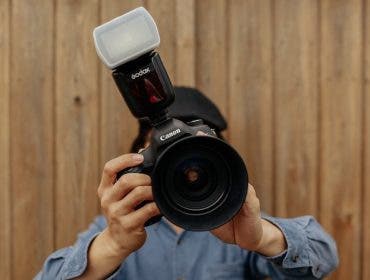
The biggest misconception people have about photography is that a better camera makes for better pictures. A camera is a tool like any other. There are, however, some advantages to having better equipment. You couldn’t sculpt a very good statue with a spork for instance. However, the person working the tools is the single greatest determining factor on whether or not the art speaks to the viewer. In photography, being able to visualize the shot and see in a way that makes others take notice is truly a skill. The aim of this post is to help you develop your visualization and observational skills.

Henri Cartier-Bresson
1. Learn from the masters
Review the greats of photography, both new and old. Find photographers whose work speaks directly to you. Is it Ansel Adams, Henri Cartier-Bresson, Anne Geddes? Look at tons pf photos and quietly reflect on them and what effect they are having on you. It is good practice to always be looking at great photographic works.
Also, make sure to look beyond photography to other disciplines such as fine art. Study paintings for composition and lighting. What styles, periods, artists speak to you? Why?

2. Get out there
You should be taking lots of pictures. You know this. I know this. You can’t get better if you don’t practice. Get out as often as you can and work on your craft. This is simple and obvious, but probably the one thing that holds back photographers from improving. I will warn you that you will definitely hit a slump where you think everything you shoot is terrible. You have to fight through this as it is definitely something that will pass.
Another great way to keep shooting is to join a photography group or find a friend to shoot with. This is not for every photographer out there as some styles of photography and some photographers require solitude, but if you
prefer company and it helps get you shooting more, this might work well for you.
3. Shoot with a goal in mind
One piece of advice that helped me tremendously is to try and visualize your photo and see the story it will tell before you take it. Take your pictures with a story or goal in mind. This should help you focus your mind and lens on what is important.

4. Switch it up
Find different angles, different perspectives. Shoot the same subject from several different distances, angles, heights, perspectives. Use a shallow depth of field as well as one where nearly everything is in focus and maybe somewhere in the middle. Find which shots works best for the subject matter and which ones you like.
Another great thing to do is to limit your lens selection to your favorite lens, I would suggest a prime like a 35mm or a 50mm, and just use that for everything. Many amazing photographers have done this and it is definitely something I recommend everyone at least try. I shot for quite a while with just a 35mm and it was a great experience. It helped me control my framing, perspective and it I got to know exactly what field of view I would have even before I put the camera to my eye. And if you need to get closer or further back, you can almost always zoom with your feet.
Also, sometimes you just need to turn around. Sometimes we get fixated on something without realizing what we are missing. I was taking a picture of a giant bonfire in Germany and I decided to spin around and see what that giant light source was illuminating and got the great shot below of my friend staring at the fire.

5. Assess and return to step 2
Have your work reviewed. Not from someone who will just praise your work, but from someone whose opinion you respect and who will tell you truthfully what they think of your work, good or bad. There are also many forums where you can find excellent photographers willing to share their time and critique your work. Photographers can be some of the most friendly, passionate people and they are often happy to help someone who is looking for a hand, be it a critique, knowledge sharing or recommendations. Just try not to ask them which camera they use.






